#person: Don Ameche
Photo
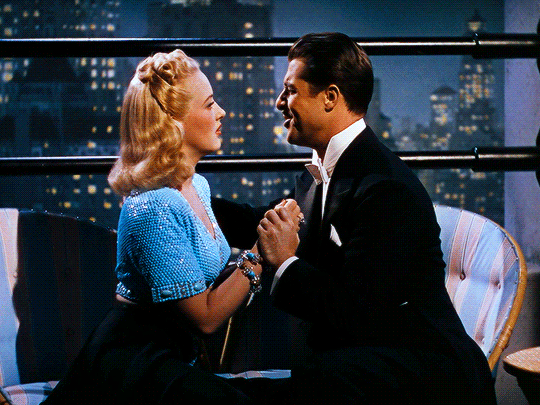
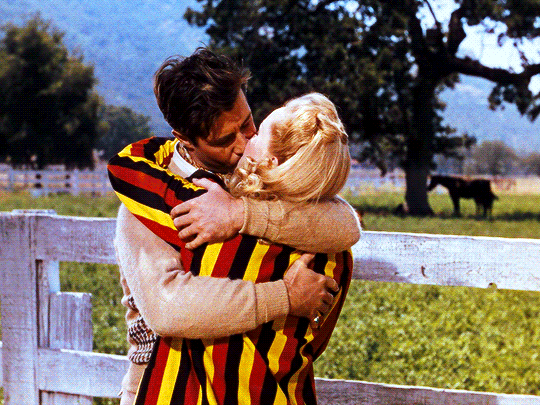

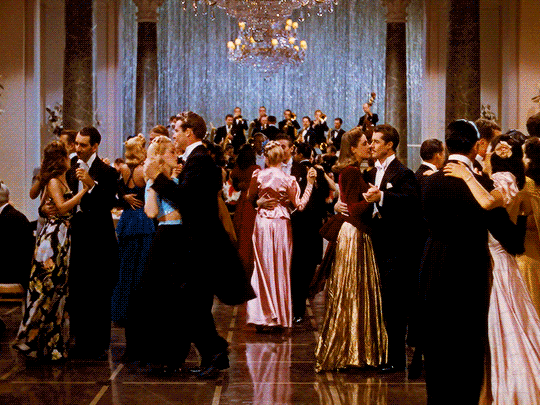


BETTY GRABLE & DON AMECHE
as Glenda Crawford & Ricardo Quintana in
DOWN ARGENTINE WAY (1940) dir. Irving Cummings
#filmedit#oldhollywoodedit#classicfilmedit#classicfilmblr#cinemaspast#dailyflicks#filmgifs#romancegifs#Down Argentine Way#Betty Grable#Don Ameche#category: Down Argentine Way#person: Betty Grable#person: Don Ameche#*mygifs#*dawedit
466 notes
·
View notes
Note
I have an idea for a prequel of the current book I’m writing. my current book is an urban fantasy that is set in modern times (not specified). the prequel would be written from the point of view of one of my mentor characters when he was younger, however as this war only occurred about 50-70 years ago, i fear i will have to specify the expected age for this mentor, whose appearance and mental age generally don’t fit. how do i combat this?
Hmm... I'm not entirely sure I understand your question.
Are you saying that your character has a younger appearance/mental age and undisclosed biological age in the first book, but involvement in a past war is important to his back story--which will be the subject of the prequel--and so you're worried about outing his actual age and that it won't make sense with the age he appears to be in book one?
If that's the case, I think maybe you need to be more honest about this character's age in book one. First off, do try to remember that age really is just a number... how a person appears and behaves is only marginally dictated by their biological age. Take these actors for example:

Wilford Brimley and Paul Rudd are both 50 in the above photos. Don Ameche and Sam Neill are both 76 in the above photos. Changing attitudes toward age, better healthcare, and personal differences illustrate a pretty drastic difference between these two sets of men who are the same ages. So, even if your character has an older biological age, don't think that means they can't still be young-looking, fit, and fun. But you do have to be honest about it, and there are lots of opportunities for illustrating that this character seems much younger than they actually are.
Happy writing!
•••••••••••••••••••••••••••••••••
I’ve been writing seriously for over 30 years and love to share what I’ve learned. Have a writing question? My inbox is always open!
LEARN MORE about WQA
SEE MY ask policies
VISIT MY Master List of Top Posts
COFFEE & FEEDBACK COMMISSIONS ko-fi.com/wqa
15 notes
·
View notes
Photo

Spider-Man: The Gathering of the Sinister Six (1999)
The Machiavelli Club, mentioned on pages 34-35 of Gathering of the Sinister Six, as well as pages 162-163 of Revenge of the Sinister Six, was founded by Professor James Moriarty, from the Sherlock Holmes stories "The Final Problem," "The Adventure of the Empty House," and the novel The Valley of Fear. Its members include various rogues from comic books, movies, prose fiction, and so forth:
* The waiter at the Macchiavelli Club is Henry from Asimov's BLACK WIDOWER stories.
* Wilson Fisk (The Kingpin)
* Obadiah Stane (The Iron Monger) from Iron Man.
* Gruber brothers: Anton Gruber first appeared in the prose novel Nothing Lasts Forever by Roderick Thorp (a sequel to his homosexual murder mystery The Detective). Anton Gruber was basically a Baader-Meinof/Red Army Faction-style terrorist. He was renamed Franz Gruber for the film Die Hard, while his brother Simon appeared in Die Hard With a Vengeance.
* Doctor Fu Manchu is obviously "the long-lived oriental gentleman" that the Gentleman refers to. (Although later on it is said that the Gentleman harbors prejudice against the Chinese, he makes no snide remarks about Doctor Fu Manchu.) The Gentleman believes that Doctor Fu Manchu is dead due to the events of Master of Kung Fu #118, though he showed up alive and well in Marvel Knights I #4. Marvel currently refers to him as the Ghost, due to licensing issues.
* Auric is Auric Goldfinger, from the Ian Fleming novel. Auric is derived from the Latin word for gold, from which its elemental symbol, Au, is derived.
* Lex is Lex Luthor.
* Justin Hammer is an Iron Man villain.
* "The German Herr Taubman." An alias used by a recurring villain called "The Deaf Man" in "The 87th Precinct" novels by Ed McBain. Great novels BTW. (Taubman is German for deaf man as I recall.) Here's a clip from a fan site.
* The Wrightsville Diedrich Van Horn is from the Ellery Queen novel Ten Day's Wonder, written by Ellery Queen. (Ellery Queen was a sleuth created by two cousins who adopted his name as their pen name. He went to a town called Wrightsville for vacations. In the movies, Ralph Bellamy played Ellery Queen-Bellamy also appeared in two Eddie Murphy movies as one of the Duke brothers.)
* Ras is Ra's Al Ghul, from the Distinguished Competition.
* Soze is from the film The Usual Suspects.
* Hannibal is Hannibal Lecter, from the novel Red Dragon by Thomas Harris, and later Silence of the Lambs and Hannibal.
* Carmen is Carmen San Diego from the computer game and cartoon show.
* Mr. Glass is from the film Unbreakable, as played by Samuel Jackson.
* Napier refers to the Jack Napier, the Joker, from the 1989 Batman film.
* Ernst is Ernst Blofeld from the Ian Fleming novel Thunderball.
* Randolph and Mortimer Duke are from two Eddie Murphy films, Trading Places and Coming to America. While in both these films Randolph and Mortimer Duke, insider traders, were played by the same actors (Don Ameche and Ralph Bellamy), Eddie Murphy was not playing the same person in these films, which were otherwise unrelated.
Although not mentioned as a member of the Machiavelli Club, Caspar Gutman worked with the Gentleman in the past, per page 166 of Secret of the Sinister Six. Casper Gutman comes from the Dashiell Hammett novel The Maltese Falcon, published in 1929.
Source: Marvel Universe Appendix
Carmen Sandiego is part of the Machiavelli Club, along with Jack Napier, Hannibal Lecter and Mr. Glass. Among others. Moriarty was a founding member, and the Gruber Brothers and a villain from an Ellery Queen novel have been members. The Gentleman briefly converses with two brothers, Randolph and Mortimer, who made their money on the futures exchange, and wonders how they earned a place at the club as they are no more 'evil' than standard stockbrokers.
Though not mentioned by name, Clint Eastwood, Robert Downey Jr. and Sylvester Stallone are all heavily implied to be attending Brick Johnson's funeral.
The cast from Scooby-Doo shows up at the end of the final book.
The 27th Precinct's Detective Briscoe takes statements.
Dr. Christian Szell is an old associate of The Gentleman.
Quentin Beck passes Cassady and Jesse.
In the third book, the Gentleman credits the inspiration for his overall Evil Plan to be a late associate of his named Auric.
One of the police officers in the third book is implied to be the son of Marge Gunderson.
Source: TV Tropes
(image via Amazon)
#books#Spider-Man#Electro#Vulture#Doctor Octopus#Mysterio#Flint Marko#Kraven the Hunter#Sherlock Holmes#Die Hard#Fu Manchu#James Bond#Lex Luthor#The 87th Precinct#Ra's al Ghul#The Usual Suspects#Hannibal#Carmen Sandiego#Unbreakable#Joker#Trading Places
8 notes
·
View notes
Text

IMPROV & SCENE STUDY this Sunday January 21
Sign up in advance - Spaces Filling Up!
SD Acting Studio - Scottsdale, Az
Register HERE:
IMPROV
1-3pm
This class is comprised of warm-ups, scenes & short form games.
This monthly Improv class is your chance to spend 2 hours, in-person,
getting into short form performance based improvising. Warm-ups,
skills, games, principles and more! Learn skills in listening,
observation, act outs, relationships, be in the moment, take risks,
roles, be more confident, take risks and more! A MUST for any actor!
CLASS SIZE IS LIMITED.
All participants MUST pre-register.
Ages 18+
$20 ($2 for processing fee)
2 hour class. 1 - 3 p.m.
SCENE STUDY
3-5pm
Scene Study is a very broad description for an acting class
that will vary depending on the teacher or school that teaches it.
Its foundation is in the performance of a "scene" or a segment of
a play, commercial, tv show or film by the student. From this
performance the instructor gives notes and suggestions to improve
the student's acting.
CLASS SIZE IS LIMITED.
All participants MUST pre-register.
Ages 18+
$50 ($2 for processing fee)
2 hour class. 3 - 5 p.m.
About Sean Dillingham:
As an actor, Sean Dillingham has appeared in over 200+ commercials and 95+ films and 30 national television series. Sean has had network television appearances on Operation REPO, Discovery ID, Buried in the Backyard, The NightShift, Longmire, Brooklyn Nine-Nine, This is Us, There’s Johnny, Yellowstone, Gentified & Better call Saul! He has acted alongside Kevin Costner, Tony Danza, Jane Seymour, Patrick Duffy, Roger Bart, Don Ameche, Stacy Keache, John O’Hurley, Andre Braugher, Andy Samberg, Milo Ventimiglia, Bob Odenkirk, America Ferrera, BJ Novak, Ashton Kutcher and more. Sean has trained with several of the top Improv Troupes in the country including The Second City, The Groundlings, Upright Citizens Brigade and I.O. West. He has also studied acting with the prestigious Lee Strasberg Theatre & Film Institute & The Stella Adler Studio of Acting.
Sean Dillingham was featured as a finalist and winner on the television show, America’s Funniest People, where ABC television producer Stephanie Keane sited him as, ”another Robin Williams”. Sean was also a finalist on the Star Search spin-off, “Ed McMahon’s Next Big Star” and has been featured on "XM Radio". He's shared the stage with Louie Anderson, Gilbert Gottfried, Patty Loveless, Belinda Carlisle, Loretta Lynn, The Doobie Brothers, Rick Springfield, K.C. and the Sunshine band, Victoria Jackson and more.
Sean is also the author of "The Book on Acting". A book of advice based on his 30+ years as a working actor.
Register HERE:
1 note
·
View note
Text
Trading Places: The Classic Comedy Film That Still Holds Up Today
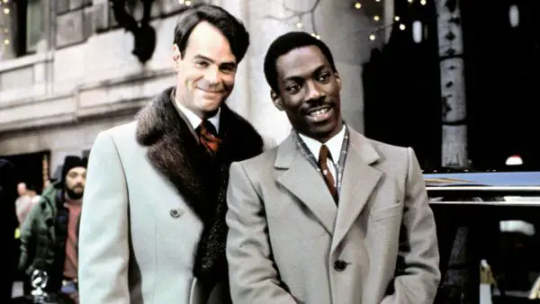

- Trading places cast: Dan Aykroyd, Eddie Murphy, Ralph Bellamy, Don Ameche, Denholm Elliott, Jamie Lee Curtis
- Trading places Director: John Landis
- Screenplay: Timothy Harris and Herschel Weingrod
- Genre: Comedy
- Release date: December 15, 1983
- Box office: $68.4 millionIn the realm of comedy films, few can match the enduring charm and wit of "Trading Places." Directed by the esteemed John Landis, this 1983 American comedy masterpiece continues to captivate audiences with its hilarious storyline, brilliant performances, and thought-provoking social commentary. Starring the dynamic duo of Dan Aykroyd and Eddie Murphy, along with a talented ensemble cast, "Trading Places" tells a compelling tale of unexpected role reversals and the triumph of character over circumstance.
The Plot: Nature vs. Nurture
At the heart of "Trading Places" lies a bet made by the wealthy Duke brothers, Randolph and Mortimer, played by Ralph Bellamy and Don Ameche respectively. Curious about the age-old debate of nature versus nurture, the Dukes decide to experiment by swapping the lives of two individuals from contrasting backgrounds. Enter Louis Winthorpe III (Dan Aykroyd), a privileged commodities broker, and Billy Ray Valentine (Eddie Murphy), a street-smart hustler.
The Dukes orchestrate a scheme where Louis is framed for theft and subsequently loses his job, while Billy Ray is given the opportunity to experience the life of luxury and success. As the story unfolds, both men face unexpected challenges and discover hidden talents within themselves. The film cleverly explores the themes of social inequality, personal growth, and the resilience of the human spirit.
Resilience and Redemption
"Trading Places" excels in portraying the resilience and redemption of its characters. Louis Winthorpe III, stripped of his wealth and status, finds himself thrust into a harsh and unfamiliar world. Through sheer determination and resourcefulness, Louis adapts to his new circumstances, ultimately proving his intelligence and integrity. Aykroyd's nuanced performance brings depth to the character, making Louis a relatable protagonist audiences can root for.
In contrast, Billy Ray Valentine initially revels in his newfound prosperity but gradually discovers the emptiness of material wealth. Underneath his streetwise exterior, Eddie Murphy's portrayal of Billy Ray exhibits vulnerability, showcasing the character's growth and moral compass. The chemistry between Aykroyd and Murphy is a highlight of the film, contributing to its comedic brilliance.
Impact and Cultural Significance
"Trading Places" struck a chord with audiences upon its release and continues to resonate with viewers of all generations. With its witty dialogue, sharp social commentary, and memorable moments, the film has cemented its status as a timeless classic. Its success at the box office, grossing over $68.4 million against a modest budget, is a testament to its widespread appeal.
Eddie Murphy's breakout performance as Billy Ray Valentine launched him into stardom, leading to a string of successful films that showcased his comedic prowess. Likewise, director John Landis solidified his reputation as a master of comedy, going on to helm other iconic movies. The impact of "Trading Places" on popular culture cannot be overstated, as it introduced catchphrases like "It's a jungle out there" and contributed to the lexicon of film quotes.
The Legacy Lives On
Decades after its release, "Trading Places" remains a beloved comedy film cherished by fans worldwide. Its timeless humor and thought-provoking themes ensure its relevance in the ever-changing landscape of entertainment. The film continues to inspire new generations of filmmakers, actors, and comedy enthusiasts.
Overall, "Trading Places" is an exceptional comedy film that transcends time. With its compelling plot, stellar performances, and profound social commentary, it stands tall among the greatest films of all time. The enduring legacy of this cinematic gem is a testament to the power of quality storytelling and its ability to captivate audiences across generations.
Read the full article
#1980sfilms#characterandintegrity#classdisparity#classicfilms#comedyfilms#cultclassics#danaykroyd#eddiemurphy#filmsthatholdup#must-seefilms#naturevs.nurture#socialcommentary#tradingplaces#tradingplacescast#tradingplacesinternational#UK#unitedkingdom#unitedstates#USA#watchtradingplaces
0 notes
Text
don ameche i really truly absolutely love u to bits but you needed to take some serious valium before you went on to tell the truth. your bad cop method of questioning brought new meaning to the phrase IT’S JUST A GAME!!!!!!!!!!!!!
seriously tho he used to get so stressed. heck, he’d probably be like “BEST OUT OF 100″ if he kept losing something as simple as rock paper scissors. bless him, i’d have hated to see him play monopoly.
#he was a good panelist though please don't misunderstand me#don't misjudge my love for him he's one of my all-time faves#but if you've ever seen him on TTTT you'll know what i mean#if the wrong person answered or didn't give a satisfactory answer his look of sheer exasperation was a picture#I LOVE YOU DON AMECHE#my random thoughts#my post
1 note
·
View note
Text
Weekend Top Ten #498
Top Ten Movie Cameos
The first time I think I ever noticed someone cameoing in a movie was Steven Spielberg. I was watching The Blues Brothers, and there was this guy, who I was sure was Mr. The Berg. I must have seen him in some behind-the-scenes something or the other. But he was a director, not an actor, so it couldn’t have been him, right? Then years later I was reading Empire, and sure enough, I was vindicated. It was indeed the play mountain himself. But more on that later.
So, cameos, then. What is a cameo? Now, in my opinion, I think it really has to be small. Really, it should just be one scene – or even one shot. The smaller the better. I’ve seen people online refer to Judi Dench in Shakespeare in Love or Tom Cruise in Tropic Thunder as cameos, which is very, very daft, as those are clearly supporting roles – even if they are quite small (and remember, Dench didn’t win her Oscar for “Best Cameo”, she won it for “We Meant To Give You This Last Year”, which is a very important category in the Oscars). I also think the best cameos should be unexpected; a nice surprising treat. And usually they’re funny – the incongruity of seeing that person in this film. Because that’s the other thing: for a cameo to really work, the person cameoing has to be kinda famous. For instance, some might say that Ashley Johnson in The Avengers is a cameo, but whilst she’s obviously awesome and prodigiously talented, I don’t think she’s instantly recognisable enough (which, y’know, she’s mostly famous as a voice actor); also there’s nothing inherently funny or surprising about her role, she’s a waitress who’s saved by Captain America. It doesn’t feel like it’s saying anything to have Johnson play that role, other than I guess Joss Whedon wanted her in the movie (it’s actually funnier that her brief scene is referenced in Loki, because Kate Herron had the whole of the MCU to draw from in a montage, but chose to use an unknown character who’s in one tiny bit of one film, entirely because she’s a huge fan of The Last of Us – see, that is arguably a cameo).
So my rationale for what is and isn’t a cameo might seem complex or even arbitrary, but when has that stopped me in the past? And so, with no further ado, we now get deep into the weeds of it and celebrate my favourite movie cameos of all time. Oh, and there’s no Bill Murray here; I know, I know, it’s a really famous cameo, but, er, I’ve never seen Zombieland. Sorry.
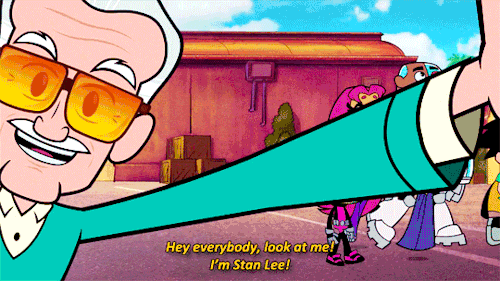
Stan Lee in Pretty Much Everything (2000-2019): I mean, who else? The absolute King of Cameos. Lee was a massive publicity hound all his life, and passed up no opportunity to get in front of the camera, so once big, proper movies were being made of his comics, he was right there, selling hot dogs in X-Men (2000), rescuing children in Spider-Man (2002), and then right through every MCU film until his sad death in 2019 (and even popping up in Teen Titans!). Hearing him tell Miles Morales “I'm going to miss him,” in Into the Spider-Verse chokes me up every time.
Carrie Fisher & George Lucas in Hook (1991): this has always been one of my favourites because unlike virtually every other entry in this list, you only know this if you’ve been told. But it’s funny and it’s sweet. When Tinkerbell takes Peter to Neverland, she flies over a bridge, where a silhouetted couple are seen canoodling. Her pixie dust falls across them, and they begin to float into the air. And apparently the unrecognisable couple are played by Princess Leia and the director of Star Wars. Which, I think you’ll agree, is pretty cool (Hook is really good for cameos).
Brad Pitt in Deadpool 2 (2018): having an invisible character offers plenty of opportunity for some good gags, especially in a Deadpool movie, but the real laugh in the film comes when the Vanisher is electrocuted and we get to see his face for a split second. And – ha – it turns out to be the hugely mega-famous Brad Pitt. It’s funny because he’s a massive star.
Martin Sheen in Hot Shots! Part Deux (1993): it’s one thing for the movie to do an Apocalypse Now gag, as Charlie Sheen’s Topper Harley sails down a river on a military boat, but hanging a lampshade on it by making it cross over with Martin Sheen’s Willard from the classic seventies Vietnam epic is another thing entirely. And then both actors notice each other – ha, funny, they’re father and son in real life – and say in unison, “I loved you in Wall Street!”. Very on-the-nose all the funnier for it.
Steven Spielberg in The Blues Brothers (1980): well, I mentioned him, and here he is, a totally nonplussed-looking administrator bloke just merrily eating a sandwich. He’s frightfully young (I’m guessing he was probably about 32 or 33) and he’s got a big brown tache instead of his usual ‘Berg Beard, he’s dressed very smartly and he’s awfully polite. His demeanour is hilariously in stark contrast to the mayhem around him, and his public persona is also hilariously in contrast to the raucous and ribald mood of the movie.
Cate Blanchett in Hot Fuzz (2007): this is one I didn’t even notice till I read about it after seeing the movie. In a very funny scene where Simon Pegg’s Nick Angel chats to his ex-girlfriend Janine, she is head-to-toe in forensic gear throughout, with a mask covering her face, so all we see are her eyes. But the gag of it is, she’s played by the phenomenally famous Cate Blanchett. You get a megastar to do one scene but make her unrecognisable. So funny it beats Peter Jackson’s evil Santa.
Don Ameche & Ralph Bellamy in Coming to America (1988): this is another one I remember finding hilarious when I was a kid. Walking down the street late at night with love interest Lisa (Shari Headley), Akeem (Eddie Murphy) nonchalantly gives a huge wad of cash to some poor homeless bums. But it turns out that they’re played by Murphy’s old Trading Places co-stars Ameche and Bellamy – and they refer to each other by their character names from that earlier film. “We’re back!” declares Ameche, referencing the end of Trading Places, when their crooked broker characters were defeated and ruined by Murphy and Dan Aykroyd. It’s a great bit of shared-universe tomfoolery, and very funny for fans of Murphy’s movies. Oh, and speaking of Aykroyd…
Dan Aykroyd in Casper (1995): in 1995 it had been six long, bitter years without a new Ghostbusters film; back then, we could still hold out hope for a proper Ghostbuster 3. Sadly that never came to pass, but it was a very pleasant surprise when Ray Stantz himself popped up in Casper, of all things, fearfully running out of Whipstaff Manor in full ghostbusting regalia and declaring, “Who ya gonna call? Someone else!”. I mean, after facing down Gozer and Vigo and who knows what else, you’d think three sarcastic arsehole ghosts would be no match for him, but maybe the ‘busters were having tough times. Maybe this will all be backstory in Ghostbusters: Afterlife. Maybe Cathy Moriarty and Eric Idle will return the favour and do cameos of their own. We can but hope.
Matt Damon, Luke Hemsworth, & Sam Neill in Thor: Ragnarok (2017): twenty years ago you could point to Goldmember as the, er, gold standard in multi-character cameo pile-ups. And while that is great – Danny DeVito giving the finger, Spielberg back-flipping – I think it’s been surpassed by this minor gaggle of stars hamming it up. Matt Damon – famouser than anyone actually billed in the movie – is An Actor Playing Loki. Dr. Alan Grant from Jurassic Park is An Actor Playing Odin (whilst Odin’s actor, Anthony Hopkins, plays Tom Hiddleston playing Loki playing Odin – do keep up), and Thor’s Real-Life Brother plays An Actor Playing Thor. It’s all delightfully meta and hilarious.
Ollie Johnston & Frank Thomas in The Incredibles (2004): this one’s really sweet, and like the Hook cameo, would very easily slip you by. At the end of the film, after the climactic battle, two old men cheer on the superheroes – “That’s old school!” “Yep, no school like the old school!” – but what’s great is that they’re voiced by – and designed to look like – Ollie Johnston and Frank Thomas, the last two surviving members of the famous “Nine Old Men” group of Disney animators, who’d worked on many of the classic Disney films. This was Pixar and director Brad Bird giving a tip of the hat to the legends who came before them, and made all the sweeter by the fact that Johnston and Thomas (both sadly now deceased) were absolute best buds in real life. A cameo that educates and makes you think! How nice!
There you go. Sadly no room for any of the many great Star Wars cameos, from Daniel Craig through to George Lucas’ entire family. Oh well!
#top ten#cameos#stan lee#thor#hook#incredibles#ghostbusters#eddie murphy#deadpool#steven spielberg#hot fuzz
6 notes
·
View notes
Photo
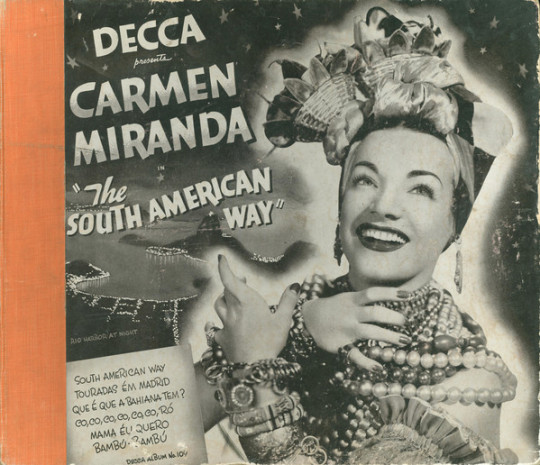

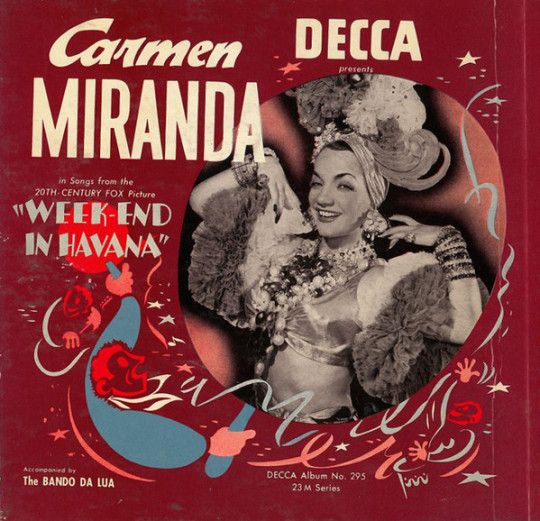
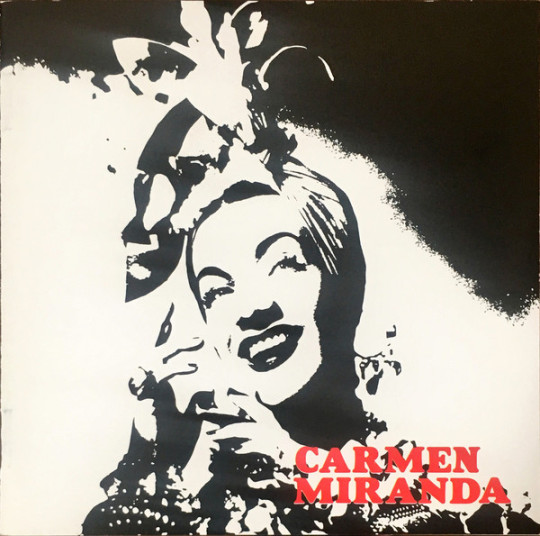
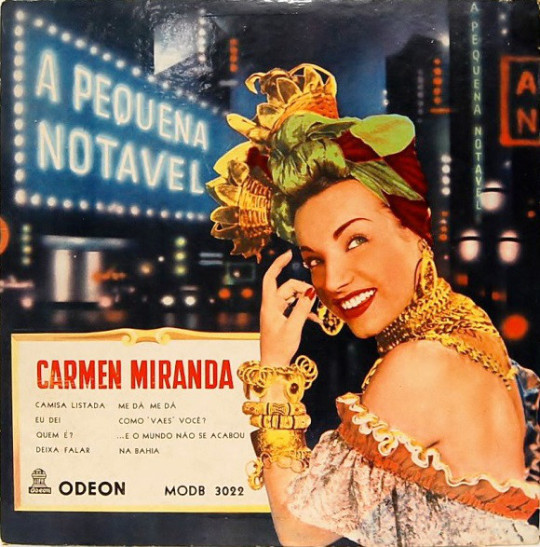
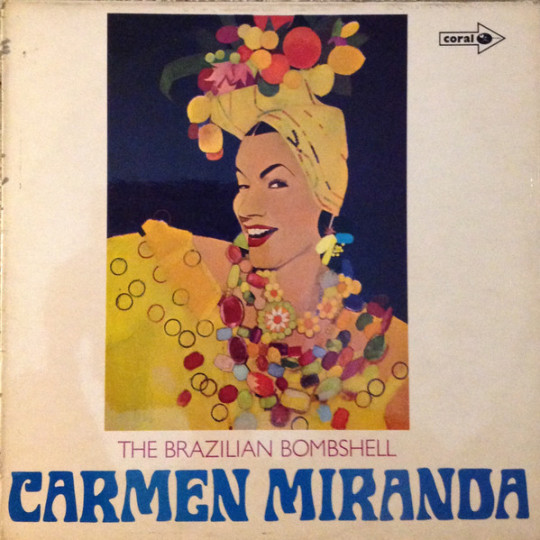
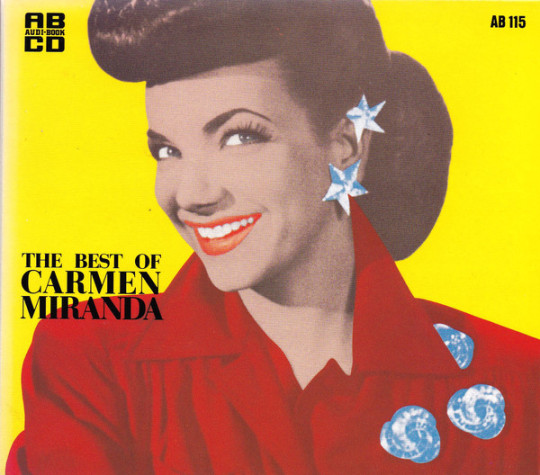
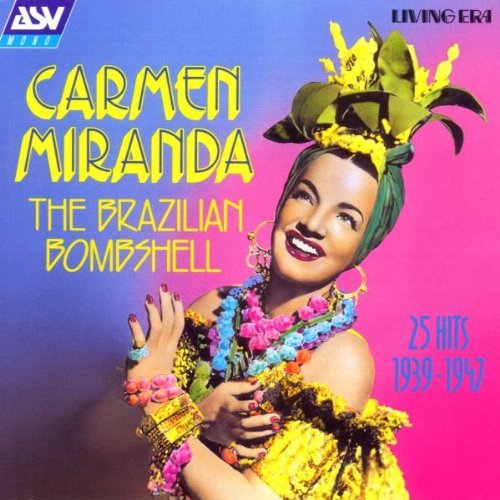

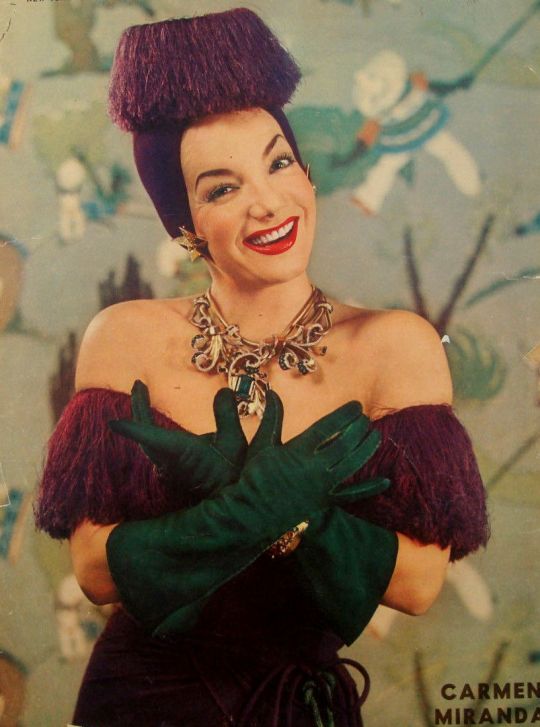
The Unforgetable CARMEN MIRANDA
Carmen Miranda (Portuguese pronunciation: [ˈkaɾmẽȷ̃ miˈɾɐ̃dɐ]; born Maria do Carmo Miranda da Cunha; 9 February 1909 – 5 August 1955) was a Portuguese-born Brazilian samba singer, dancer, Broadway actress, and film star who was active from the 1930s on. Nicknamed "The Brazilian Bombshell", Miranda is known for her signature fruit hat outfit she wore in her American films. As a young woman, she designed hats in a boutique before making her first recordings with composer Josué de Barros in 1929. Miranda's 1930 recording of "Taí (Pra Você Gostar de Mim)", written by Joubert de Carvalho, catapulted her to stardom in Brazil as the foremost interpreter of samba.
During the 1930s, Miranda performed on Brazilian radio and appeared in five Brazilian chanchadas, films celebrating Brazilian music, dance, and the country's carnival culture.Hello, Hello Brazil! and Hello, Hello, Carnival! embodied the spirit of these early Miranda films. The 1939 musical Banana da Terra (directed by Ruy Costa) gave the world her "Baiana" image, inspired by African-Brazilians from the northeastern state of Bahia.
In 1939, Broadway producer Lee Shubert offered Miranda an eight-week contract to perform in The Streets of Paris after seeing her at Cassino da Urca in Rio de Janeiro.The following year she made her first Hollywood film, Down Argentine Way with Don Ameche and Betty Grable, and her exotic clothing and Lusophone accent became her trademark. That year, she was voted the third-most-popular personality in the United States; she and her group, Bando da Lua, were invited to sing and dance for President Franklin D. Roosevelt. In 1943, Miranda starred in Busby Berkeley's The Gang's All Here, which featured musical numbers with the fruit hats that became her trademark. By 1945, she was the highest-paid woman in the United States.
Miranda made 14 Hollywood films between 1940 and 1953. Although she was hailed as a talented performer, her popularity waned by the end of World War II. Miranda came to resent the stereotypical "Brazilian Bombshell" image she had cultivated, and attempted to free herself of it with limited success. She focused on nightclub appearances and became a fixture on television variety shows. Despite being stereotyped, Miranda's performances popularized Brazilian music and increased public awareness of Latin culture. In 1941, she was the first Latin American star to be invited to leave her hand and footprints in the courtyard of Grauman's Chinese Theatre, and was the first South American honored with a star on the Hollywood Walk of Fame. Miranda is considered the precursor of Brazil's 1960s Tropicalismo cultural movement. A museum was built in Rio de Janeiro in her honor, and she was the subject of the documentary Carmen Miranda: Bananas is My Business (1995).
from Wikipedia
18 notes
·
View notes
Text
Coming to America: The Secret Shared Cinematic Universe You Forgot About
https://ift.tt/3bcJ0Cq
When one thinks about 1988’s Coming to America, a few things stand out: James Earl Jones and Madge Sinclair as the King and Queen of Zamunda speaking to their son Prince Akeem (Eddie Murphy) at a breakfast table with intercom radios; the opulence of Zamunda’s palace, which represented an idealized African nation to 1980s audiences the way Wakanda does today; and of course Murphy and Arsenio Hall’s Semmi fresh off the plane in Queens, New York with no idea what “common” means—or also Murphy and Hall under pounds of makeup as the argumentative old-timers at the nearby barbershop.
The film has many great elements that make it a comedy classic. However, what’s often overlooked is that the picture is not-so-secretly part of a shared cinematic universe. Indeed, Coming to America is the film which confirmed several of director John Landis’ films all occur in the same world: One with another Eddie Murphy as Billy Ray Valentine, a small time hustler who gets one over on some rich old racists and winds up nouveau riche in Trading Places, and one with carnivorous lunar activities in An American Werewolf in London. Weird, right?
The more overt and official of these is the callback to Murphy and Landis’ previous collaboration, Trading Places (1983). In that film, Murphy’s Billy Ray Valentine is an unimpressive grifter who’s trying to get by on a put-on about being a Vietnam vet without legs. Obviously Billy Ray has never had the opportunity to achieve more, and two corrupt blue bloods named Randolph and Mortimer Duke (Ralph Bellamy and Don Ameche) think it would be funny to give Billy Ray that chance to succeed—if only temporarily, after all they don’t want a Black man actually flourishing at their company—while throwing their silver spoon lackey, Louis Winthorpe III (Dan Aykroyd) into poverty.
It’s a cynical racist game they’re playing, and it ends up blowing up in their faces, with Billy Ray and Louis eventually joining forces to get rich while bankrupting the Dukes. In other words, it’s a perfectly ‘80s comedy in tune with that decade’s values: humor based in a lot of stereotypes that ends with the good guys getting rich. Still, it’s a charmer which, alongside 48 Hrs. (1982), proved Murphy was a bona fide movie star outside of Saturday Night Live. Hence why Murphy and Landis are so keen to call back to it in Coming to America.
Late in the 1988 comedy about Prince Akeem traveling to New York City in order to meet a nice American girl, the prince and Lisa (Shari Headley) are taking a walk in the promenade near the Brooklyn Bridge when Akeem gives a handful of rolled up hundred dollar bills to two homeless men. Committed to embracing a life of poverty, Akeem tells Lisa he just gave away pocket change. However, when the camera returns to the two old-timers beneath blankets and cardboard, we learn that (gasp) it’s Ralph Bellamy and Don Ameche! It seems Billy Ray and Louis really did thoroughly put these capitalist vultures out on the street. But the two grumpy old men are thrilled with this newfound investment.
“Mortimer, we’re back!” Bellamy announces with a Cheshire grin. The two then show up again to bang on Akeem and Lisa’s window as they have dinner, shouting, “Let’s have lunch.”
It’s an amusing and impossible-to-miss Easter egg for fans of Murphy’s films. Although given how rotten the Duke brothers are, we fear Akeem has done more harm than good. The moment also makes the two films a rare thing in 20th century Hollywood cinema: a shared cinematic universe. While the Universal Movie Monsters did this 40 years prior to Trading Places, we were still a long way from Quentin Tarantino and Kevin Smith’s independent world-building in their 1990s films, never mind the Marvel Cinematic Universe popularizing the idea a decade after that.
However, what many miss is that Trading Places isn’t the only Landis movie that Coming to America also calls back to. Later in the 1988 movie, Akeem is chasing Lisa, and the two run through an appropriately scuzzy New York City subway. There are real posters from that time period on the walls, such as one for August Wilson’s Broadway play Fences, which starred James Earl Jones and Frankie Faison (both players in Coming to America). But there’s also a poster for See You Next Wednesday.
This fictional title does not correspond with a real movie, however it does match a running joke throughout Landis’ filmography, including most famously in The Blues Brothers (1980) and An American Werewolf in London (1981). Consider a nondescript billboard for a movie called See You Next Wednesday also appears in The Blues Brothers, with Aykroyd and John Belushi driving right past it in Chicago while on a mission from God. In American Werewolf, meanwhile, there are posters scattered throughout the London tube system for a movie of sorts also titled See You Next Wednesday.
The title is a play on the dirty turn of phrase “See You Next Tuesday,” and actually originates from a line of dialogue spoken in Stanley Kubrick’s 2001: A Space Odyssey. Landis, however, enjoys sprinkling it throughout his work, suggesting it’s the name of a fictional movie, one with a significant underground advertising budget between Werewolf and Coming to America.
The movie-within-a-movie is revealed in Werewolf’s third act to actually be a seedy porno film playing in London’s Piccadilly Circus. It’s there that the poor schmuck David Kessler (David Naughton) transforms into a werewolf one last time, and kills some perverts on his way out the door.
Admittedly, this is not an official connection between Coming to America and An American Werewolf in London, or The Blues Brothers. For starters, it legally has to be slightly different since Werewolf and Brothers are Universal Pictures releases while Coming to America (like Trading Places) was produced by Paramount. Additionally, the See You Next Wednesday poster in Coming to America is not for a porno film, but a glossy sci-fi cheesefest apparently starring Jamie Lee Curtis, who also happened to appear in Trading Places. But we suspect these superficial differences in the posters (that you have to squint to notice) are concessions to the legal need to differentiate the running joke.
Like the fan theory that Ridley Scott’s Alien and Blade Runner occur in the same universe—a theory Scott himself has publicly supported—despite the sci-fi films being produced by different studios, Landis seems to invite folks to imagine Coming to America and a number of his other films are also part of the same universe.
It’s a funny thing to imagine that there are two Eddie Murphys out there, one yachting with Aykroyd’s Louis and Curtis’ Ophelia around the world, and the other a kind hearted if overly naïve African prince. And while Zamunda is a kind of paradise (at least for the men in its highly patriarchal society), demons and cursed devils like David Kessler prowl the moors of England, picking off American tourists too dim to beware the moon and stick to the road.
Read more
Movies
Coming 2 America: How Wesley Snipes Got Into Rhythm with Eddie Murphy
By Tony Sokol
Movies
Coming to America: Ranking Every Eddie Murphy Character
By David Crow
Of course these are more winks and nods than concrete world-building, and they’re masterminded by one of the most controversial directors of their era. In fact, it is hard to consider these connections and not also recall the director’s complicated past. For a short time, Landis was on top of the world when he made Animal House, The Blues Brothers, and An American Werewolf in London back-to-back-to-back. But by the time of Coming to America’s release, fewer and fewer colleagues were working with him due to the tragic and entirely avoidable disaster on the Twilight Zone: The Movie set, an accident which led to the deaths of three people, two of them children. Murphy, however, was one person who continued to work with Landis.
And the two worked exceptionally well together, indeed. Landis’ specific brand of outlandish, sometimes fratty humor complemented Murphy’s big swings as a performer, including beginning to experiment with makeup comedy. He never more adeptly used prosthetics than in Coming to America; and much of this film’s iconography comes from Landis and his wife, costume designer Deborah Nadoolman, who imagined Akeem and Semmi’s now iconic Zamunda winter wear.
Whatever else, Landis helmed some of the most popular comedies of the 1980s, with four of them apparently existing in the same universe. Remembering that these days can still crack a smile. Or at least a howl.
cnx.cmd.push(function() { cnx({ playerId: "106e33c0-3911-473c-b599-b1426db57530", }).render("0270c398a82f44f49c23c16122516796"); });
The post Coming to America: The Secret Shared Cinematic Universe You Forgot About appeared first on Den of Geek.
from Den of Geek https://ift.tt/3bbdPaF
2 notes
·
View notes
Photo
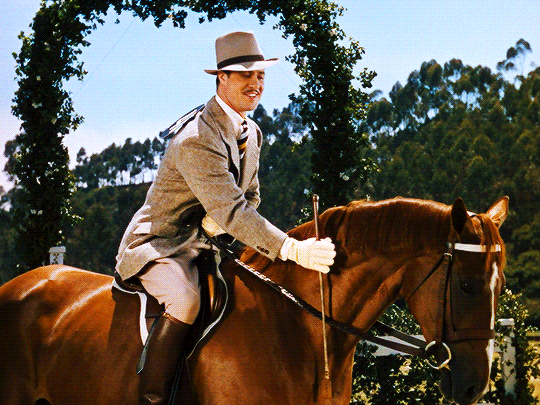

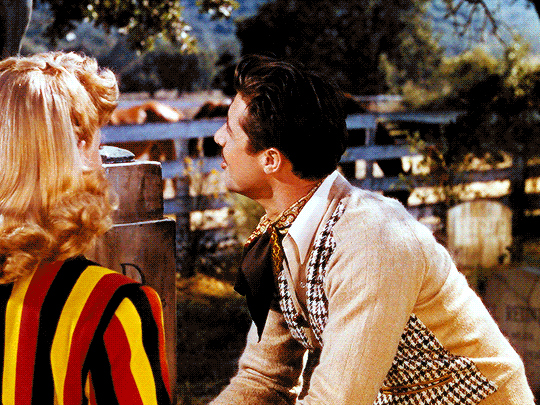

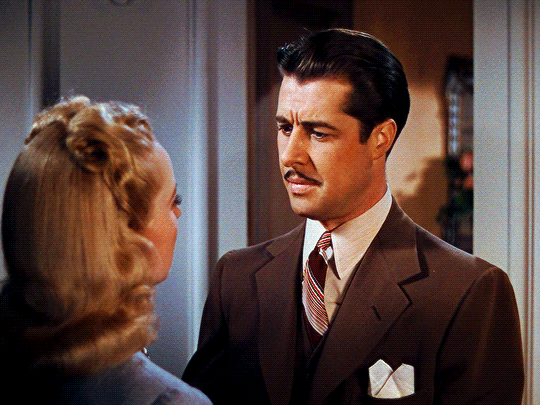
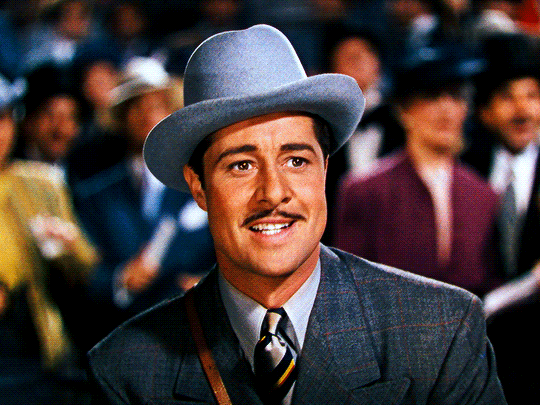
"For me it don't make much difference, I am an old man. But for you, Ricardo, it's too soon to die so young by the hand of your father. But then I guess we all die sometime, huh?"
DON AMECHE as Ricardo Quintana in
DOWN ARGENTINE WAY (1940) dir. Irving Cummings
#filmedit#oldhollywoodedit#classicfilmedit#classicfilmblr#cinemaspast#uservintage#moviegifs#romancegifs#Down Argentine Way#Don Ameche#category: Down Argentine Way#person: Don Ameche#*mygifs#*dawedit#and presenting in the role of the argentinian rich guy... wisconsin's favourite son!#close enough right? [comedy wah-wah sound effect]
265 notes
·
View notes
Video
youtube
Hotel Anchovy 1934 {B&W Classic Comedy Short}
The Ritz Brothers were a comedy team operating predominately in the 1930s and ‘40s, peers of the more recognized Marx Brothers. While the Marxes were notable for their various differing personalities playing off one another and whoever was unfortunate enough to be their target, the Ritzes went about things like three rapid-fire versions of the same screwball, a dancing, silly-voiced three-man tornado.
The above is the first picture they made, the 1934 two-reeler Hotel Anchovy. Harry played the hotel manager and eldest brother Al the hotel detective while baby brother Jimmy played a bellhop. They come together to, basically, screw with guests at a hotel until the owner can get it sold. Unlike the Marx Brothers, who would’ve been cast as “legitimate” operators that indulged in farce, probably because they were all conmen, the Ritz Brothers were hired (in the short) to be wacky and zany, which they pull off with aplomb. This is seriously one of the funniest things ever put to film.
Three of four brothers (brother George was their manager) and a sister (Gertrude) born to a couple in Newark, NJ, to an Austrian-born Jewish haberdasher and wife named Joachim, Al was the first to enter showbiz as a vaudeville dancer. Seeing “Ritz” on on a laundry truck, he took it as a stage name. Harry and Jimmy eventually joined, and the brothers soon incorporated comedy bits into their dancing routine. Unlike the Marxes manic wordplay or the Three Stooges (which included brothers Moe, Curly and Shemp Howard along with Larry Fine) outrageous slapstick, the Ritzes specialized in precision-timed jokes and rampant silliness, drawing on their considerable skills as dancers to compliment the vocal gags. Rubber-faced Harry acted as leader with Al and Jimmy following along in his wake. Starting out on vaudeville and working nightclubs in the ‘20s, by the early ‘30s they were headliners
After making Hotel Anchovy in 1934 for Educational Pictures, the home of stone-faced funnyman Buster Keaton, the Ritz’s signed a picture deal with 20th Century Fox, playing usually in musicals using their boisterous zaniness to liven up some rather pedestrian pictures. Their first film was 1936′s Sing, Baby, Sing with no one you’ve probably heard of, and they got their first staring role with 1937′s Life Begins At College.
Unfortunately, the Ritz Brothers never got the good writers and top gag men the Marx Brothers (initially) got, and their films are, well... pretty dull. Their scenes are always a treat but the rest is usually a slog. One rare exception is the 1939 take on Alexander Dumas’ well-worn The Three Muskateers staring Don Ameche (Trading Places and Cocoon). Staging a walkout over the low-quality scripts they were being given, particularly 1939′s woeful The Gorilla featuing an already slumming Bela Lugosi, and Fox basically told them to get stuffed. They made one more picture before signing with Universal.
Unfortunately, Universal didn’t treat them much better, regulating them to B-movies and cameos. The Brothers stuck it out until 1943′s Never A Dull Moment, which actually wasn’t that bad comparatively, before quitting the movie business. They went back to working mostly in nightclubs with the odd appearance television appearance for the next 20 years.
In 1965 while appearing at the Roosevelt Hotel in New Orleans (which is still in operation in the CBD) Al Ritz died of a heart attack. Always very close, the two surviving brothers were devastated but carried on the act for a few more years. They appeared in a pair of ‘30s B-movie homages in the mid ‘70s, Won Ton Ton, The Dog Who Saved Hollywood and Blazing Stewardesses. The later movie they replace the Three Stooges, as an aging Moe Howard was too sick to participate. Harry also cameoed in Mel Brooks’ 1976 paean to classic Hollywood Silent Movie.
Eventually retiring, Jimmy Ritz died in November 1985. Brother Harry’s own health was too delicate and he was never told of his brother’s death. He passed away five months later.
While they’re often compared to the Marx Brothers, who would occasionally turn on the speed-of-light tomfoolery like the examination scene in A Day At The Races, the comparison really wasn’t fair. The Ritz Brothers never really let the pace down long enough to engage in the sort of deadpan give-and-take double-talk humor Groucho and Chico excelled in. Indeed, it was rare to see a scene where one sole Ritz engaged with anyone else, a la Grouch’s insult-laden flirting with Margaret Dumont or Thelma Todd. And up until Irving Thalberg’s death at least, the Marxes just flat out got better scripts and jokes.
But as Hotel Anchovy proves, with the right material the Ritz Brothers were as funny as anyone in the golden days of Hollywood. They influenced everyone from Jerry Lewis and Sid Caesar to George Carlin and the TV show M*A*S*H. Harry Ritz was said to be the “funniest man in Hollywood” by many, including Norman Lear. The Brothers got a star on the Hollywood Walk of Fame in 1987 in response to a campaign led by Milton Berle and Phyllis Diller.
Their movies are hard to find but to be frank, they’re for the most part not worth the effort. However, Hotel Anchovy is a scream, a lost nugget of Hollywood. Check it out.
#the Ritz Brothers#Hotel Anchovy#Education Films#Buster Keaton#the marx brother#the Three Stooges#20th Century Fox#Universal Pictures#Harry Ritz#Jimmy Ritz#Al Ritz#Alexander Dumas#The Three Muskateers#Trading Places#Cocoon#New Orleans#Roosevelt Hotel#comedy#classic hollywood#Jewish comedy
13 notes
·
View notes
Photo

Saw this page from a 3/10 review of some $8 (!!!) Frank Miller - John Romita Jr. Superman comic. Apparently that’s what those guys are doing now-- they’re retelling Superman’s origin? Oooof.
Looks like they still got it, though! Haha... Oooof. This page! Ooooooof.
Do you make comics? Are you really hard on yourself about the comics you’re making not hitting some level of quality you imagine is called for? Check out this page, and feel that sweet gush of liberation from self-doubt!
Eight dollars!
They probably got paid pretty good to make that page, or making some boring-ass Superman’s origin comic, though. Money’s nice, I guess-- you guys like money? I enjoy money, personally-- heck, I wouldn’t say no to any, usually-- I like using it to purchase goods and/or services, especially-- that’s my jam. Romita Jr. is 62, and according to Google, Frank Miller is 62 (though based on recent photos, I suspect that he made a wish at one of those Zoltar machines from the movie Big to be in the body of someone 30 years older... Josh Baskin done fucked up this time ...). So I mean, they had their good years-- probably nobody’s waiting around for 62 year olds to really blow the lid off the joint. It’s not like you can go “Oh they could be doing so much better stuff creatively with their time” cause... nah, that probably isn’t so.
So...If they can get somebody to hand them a bunch of money at 62 to be the 9 billionth people to retell Superman’s origin, get that money. Frank Miller’s got hats to buy. And you know... Hopefully it’s making them feel young again, like a Cocoon-type scenario where Romita Jr. is like Don Ameche and Frank Miller is like Wilford Brimley’s meth dealer...
Sounds like a typical DC Comic, though: "Clark saves Lana Lang from what’s framed in the art as an attempted gang rape/assault”. Cooooooool stuff, cool publisher, cool audience, cool cool cool. Romita Jr. looks like he doesn’t have anything left in the tank on any of the pages they’re showing off. And in Frank Miller’s version of Superman’s origin, Superman joins the Navy (???), and uh... Is this real life? I still read comics but I don’t read any DC Comics, on account of having morality, so I didn’t know this was a thing until tonight. It feels like an elaborate practical joke.
Eight dollars! *Bangs hand on table*
More importantly: Has Frank Miller used this comic as an excuse to give any more of those sweet interviews about how young people need to all murder the evil browns, like the Greatest Generation would’ve done? Inject it into my veins! Rememer when Frank Miller tried to rebrand himself as like “comics’s answer to the question of what if Glen Beck looked like a decomposing corpse” but then when that didn’t make him money, he like tried to mount a completely half-assed rebranding where he got Neal Adams to blame booze for the years Miller spent painstakingly making a racist comic and conveying to journalists his opinions about how people protesting Wall Street were all “rapists”-- because sure, sure I don’t know how many times I’ve woken up super-hungover, and there’s been a carefully-inked 120-page racist hardcover graphic novel lying next to me. (Here’s the Guardian article about all that-- such disingenuous fucking bullshit). Anyways, after all that, he pivoted to telling people about how Superman would probably enjoy being a sailor. Ooooof. Oooooooof!
"Martha Kent greets that husband of hers and that son of hers politely. She asks polite questions. None of their answers are acceptable. She asks more polite questions." Oooooof. This all reminds me of something Superman once said...
6 notes
·
View notes
Text
Out of the blue I watched a new-to-me movie the other day about a retired Army Colonel who takes on corrupt politicians in his hometown in Georgia. The movie’s title is Colonel Effingham’s Raid, a 1946 comedy directed by Irving Pichel starring Charles Coburn as the title character. Colonel Effingham’s Raid has a lot going for it with charm high on its list of attributes thanks in large part to Coburn, the Georgia native with a talent for comedy and an English accent. It was then that I decided to dedicate an entry to him because I enjoy him so…and…lo and behold, this week would have been his birthday.
Charles Coburn (June 19, 1877 – August 30, 1961)
We have an embarrassment of riches in the character actor department of classic films. There are numerous memorable actors who deserve praise for bettering films simply by their appearance no matter how small a role. One of those is Charles Coburn who enjoyed a popularity many of the other character players did not. Indeed, thanks to Coburn’s 3-decades-long screen career during which he appeared in nearly 100 movies and television shows, his name recognition rivaled that of the stars whose names appeared above the title. Coburn was also highly regarded critically receiving three Academy Award nominations for Best Supporting Actor, taking home Oscar once for his delightful portrayal of Benjamin Dingle in George Stevens‘ wartime comedy, The More the Merrier (1943). More important than awards, however, was Charles Coburn’s undeniable ability to delight greatly with his talent.
Charles Douville Coburn was born in Macon, Georgia on June 19, 1877 and grew up in beautiful Savannah. He was the son of Scotch-Irish Americans Emma Louise Sprigman and Moses Douville Coburn who were not entertainers, but that didn’t stop young Charles from taking odd jobs at the local Savannah Theater starting at the age of 14. He was bitten by the entertainment industry bug early and did everything from handing out programs to being the doorman to theater manager by the age of 18. Failing to make his mark in Georgia, Charles left for New York at age 19. Although Mr. Coburn didn’t hit the big time immediately, his Broadway debut in 1901 was an inevitability as was his forming The Coburn Shakespearean Players in 1905. His partner in that endeavor was another actor, Ivah Wills, who became Mrs. Coburn in 1906. The two had six children together.
In addition to managing the Coburn Players, Charles and Ivah starred in and produced many plays throughout the decades during which the troupe traveled to college campuses across the country and appeared on Broadway. The couple met when he was playing Orlando to her Rosalind in As You Like It. They continued to work together until her death in 1937 performing Shakespeare and French and Greek dramas and comedies. In her book, Greek Tragedy on the American Stage: Ancient Drama in the Commercial Theater …, Karelisa Hartigan mentions how the Coburn Players would give over 100 performances every summer mostly outdoors. The popularity of their performances created an interest in outdoor theaters with other companies following their lead. Charles Coburn played most of the male leading parts with Ivah, billed as Mrs. Coburn, playing the female leads. The productions were often called “amateurish” by critics, but the performances were always praised. These scholarly productions likely led to Charles’ English accent despite being a Southern gentleman.
I’d be remiss not to mention that although few know her name, Ivah Wills had a long list of credits in her own right both as an actor and producer in a career that spanned 35 years. Ivah garnered positive reviews along with her husband and both were highly regarded members of the acting community. To put it in perspective, consider that George M. Cohan was among the honorary pallbearers at Ivah’s funeral.
Cobrun and Wills in The Taming of the Shrew
Ivah and Charles
After Ivah Wills’ death, Charles Coburn moved to Hollywood to start a movie career. He’d already appeared in a 1933 short film and in The People’s Enemy, a crime drama directed by Crane Wilbur. However, the roles that would cement his legacy as a screen star began in earnest in 1938 with comedic performances far removed from his classical training, but roles in which he excelled. Coburn’s best movie roles are the ones where he perfectly balances the high-brow snootiness with a touch of bumbling fool. Roger Ebert described him as a toned down Charles Laughton and that’s exactly right. Coburn paved the road to stardom at the age of 61 and became a steadfast presence that could be counted on for his comedic timing as charming old men with affected manner and accent – always with a monocle, which he removed only to eat, and sometimes chomping on a cigar. One cannot help but smile when he appears on screen.
Clarence Brown‘s Of Human Hearts (1938) offered Coburn his first substantial role alongside a first-rate cast led by Walter Huston, James Stewart and another terrific character actor, Beulah Bondi. Although that film is a Western, Coburn played a doctor, the type of professional role along with several judges, business men, a couple of “sirs,” and rich guys that he enjoyably brought to the screen throughout his career.
Charles Coburn’s memorable big screen credits are too numerous to list, but he made important contributions to such enduring classics as John Cromwell‘s Made for Each Other (1939) and Garson Kanin‘s Bachelor Mother (1939). A personal favorite of mine, Preston Sturges’ The Lady Eve (1941) wherein Coburn plays “Colonel” Harrington, father to Barbara Stanwyck’s Jean Harrington, a duo of card sharps adept at swindling the rich, would not be the same without him. The actor followed that Sturges gem with his first Oscar-nominated performance as an irascible tycoon who goes undercover as a shoe clerk at a department store to try to uncover agitators trying to form a union in Sam Wood’s The Devil and Miss Jones (1941). Starring Jean Arthur, Robert Cummings and a slew of fantastic character actors like Spring Byington, Edmund Gwenn, S. Z. Sakall, and William Demarest, you must make time to watch The Devil and Miss Jones if you’ve not seen it. It is bewitching fun.
Coburn and Jean Arthur in THE DEVIL AND MISS JONES
The 1940s served several standouts for Charles Coburn who appeared in 4 to 5 pictures a year in the early part of the decade. Of course, his Oscar-winning performance in Stevens’ World War II comedy The More the Merrier stands tall above the heap. Opposite Jean Arthur and Joel McCrea, Coburn is wonderful as the retired millionaire who finagles his way into a room during the wartime housing shortage. Coburn’s blustering but endearing manner in this film typifies the greatest gift he brought to the movies, by my estimation, and it is hard to resist. Variety agreed with me as of this movie they wrote, “A sparkling and effervescing piece of entertainment, The More the Merrier, is one of the most spontaneous farce-comedies of the wartime era. Although Jean Arthur and Joel McCrea carry the romantic interest, Charles Coburn walks off with the honors.”
Another worthy 1940s turn for Coburn was Ernst Lubitsch‘s Heaven Can Wait in 1943. Here he plays another grandfather and another millionaire with usual memorable flare alongside a stupendous cast led by Gene Tierney and Don Ameche. Once again I must mention Pichel’s Colonel Effingham’s Raid in which Coburn co-starred with Joan Bennett and William Eythe and several other veteran character actors like Donald Meek and Cora Witherspoon. This was a fun discovery.
Charles Coburn received his third Academy Award nomination for what TCM’s Robert Osborne described as a “rip-roaring performance” as a gruff but loving grandfather in the coming-of-age tale told in Victor Saville‘s The Green Years (1946). Following that performance, Coburn’s big screen appearances slowed down significantly. He had signed a contract with Columbia Pictures in 1945, which required only four films in two years. This meant that the actor had more time to return to the stage and to dedicate time to television work, which he did with gusto starting in 1950 as a premiere guest on many anthology series. Still, Coburn made a few notable pictures in the 1950s delighting audiences with a comedic millionaire performance as Sir Francis “Piggy” Beekman in Howard Hawks‘ Gentlemen Prefer Blondes (1953), a role that could have easily been creepy portrayed by anyone else. He also played against type in John Guillermin‘s murder mystery, Town on Trial (1957), which I must get my hands on.
Coburn with Jane Russell and Marilyn Monroe in a publicity shot for GENTLEMEN PREFER BLONDES
Coburn’s final screen appearance was in The Best of the Post, an anthology series adapted from stories published in the Saturday Evening Post magazine. The March 1960 episode is titled “Six Months More to Live.” That seems a somber ending to a stellar career, but one to be proud of for many reasons not the least of which is that Coburn appeared in five Oscar Best Picture nominees: Kings Row (1942), The More the Merrier (1943), Heaven Can Wait (1943), Wilson (1944) and Around the World in 80 Days (1956). Only the last of these won, but they were all improved by the Coburn brand.
At the time of his death Charles Coburn was married to Winifred Natzka who was forty-one years his junior. The two were married in 1959 and had a daughter together. The actor’s final acting role was fittingly on stage in a production of You Can’t Take It With You in Indianapolis, Indiana a week before his death at the age of eighty-four. The previous year he had been honored with a star on the Hollywood Walk of Fame located at 6268 Hollywood Boulevard. If you ever pass that address be sure to look downward at his star – it was well earned.
A Tribute to Charles Coburn Out of the blue I watched a new-to-me movie the other day about a retired Army Colonel who takes on corrupt politicians in his hometown in Georgia.
4 notes
·
View notes
Photo

Next In-Person Classes are March 5th at my Acting Studio in Scottsdale. Classes offered in-person are:
IMPROV, SCENE STUDY & COMMERCIAL ACTING
Weekly online classes are offered in: Improv, Coaching, Consultations, Self-Tape Reader and more!
These classes get full, so register sooner than later!
All the information and to register, can be found HERE:
https://www.seandillingham.com/classes
Why Study with me? Here’s why:
That can be summarized in just 2 words:
EXPERIENCE MATTERS
In addition to being a WORKING ACTOR, I am a member of the Screen Actors Guild and work professionally in film, network and cable television, as well as theatre. As an Instructor, I’ve successfully coached actors into all levels and aspects of film (Features, Short, Student), Commercials, UGC, Stage, Voice and more. I'm also an award winning Actor, Instructor and Producer.
As an actor, I've appeared in over 180+ commercials and 80+ films and 25 national television series. I've had network television appearances on Operation REPO, Discovery ID, Buried in the Backyard, The NightShift, Longmire, Brooklyn Nine-Nine, This is Us, There’s Johnny, Yellowstone, MacGruber & Better call Saul!
I've acted alongside Kevin Costner, Tony Danza, Jane Seymour, Patrick Duffy, Roger Bart, Don Ameche, Stacey Keache, John O’Hurley, Andre Braugher, Andy Samberg, Milo Ventimiglia, Bob Odenkirk, BJ Novak, Ashton Kutcher, Sam Elliot, Mickey Rourke, Will Forte, Laurence Fishburne, Kristen Wiig, Alec Baldwin and more.
I've trained with several of the top Improv Troupes in the country including The Second City, The Groundlings, I.O. West and Upright Citizens Brigade.
I have, and continue to study with the prestigious Lee Strasberg Theatre and Stella Adler Theatre.
I was featured as a finalist and winner on the television show, America’s Funniest People, where ABC television producer Stephanie Keane sited me as, ”another Robin Williams”. I was also a finalist on the Star Search spin-off, Ed McMahon’s Next Big Star and have been featured on XM Radio and Spotify. I've shared the stage with Louie Anderson, Gilbert Gottfried, Patty Loveless, Belinda Carlisle, Loretta Lynn, The Doobie Brothers, Rick Springfield, K.C. and the Sunshine Band, Victoria Jackson and more.
Here’s a brief video to watch:
https://youtu.be/z8TUM_2TE5s
1 note
·
View note
Text
CEMETERY STROLL
CEMETERY STROLL - https://keywestlou.com/cemetery-stroll/I was a history major. Always loved stories of old. I frequently traveled. My legal work required such. I discovered cemeteries a source of history. Especially in old towns and villages. I visited cemeteries for years. Inscriptions on the stones the key. To a family history or history of a particular time. Key West has one of the finest cemeteries for taking an historical walk. So much to see and absorb! The Key West Cemetery is providing tours tomorrow. Ninety minutes each. Reservations required. Call 305-304-1453. Do yourself a favor and take one of the tours. Then a late breakfast or early lunch at one of Key West's famous eateries on the water. Nothing better! Today the morning after St. Patrick's Day. Back when, I was a walker. Early mornings. I was out and about as the sun rose. One of my favorite walks took me from the Atlantic to the Gulf and back on Duval. Ain't no one on the streets at 7 in the morning in Key West. Duval was always a mess at the end of the evening on St. Patrick's Day. The next morning Duval was littered. A literal garbage dump. As I walked, the streets were in the process of being cleaned. Men and machinery. By 9, you would never know how ravished it had been 2 hours earlier. Leprosy and Key West. Key West had its share of leprosy in the early 1900's. A problem. The disease non curable and rampantly spread. The scenario for anyone dying of leprosy back then was the same. The Citizen's Key West History Section this morning tells the story of what happened to the deceased's property. A man who lived on Virginia Street died in 1909 at his home of the dreaded disease. His house and all its contents were destroyed by fire under the direction of then Fire Chief Fulford. The Big Tournament is underway! Upsets already. In the first round yesterday, Final Four contender Kentucky was beaten in overtime by #15 seed St. Peter's 85-79. It happens every year. I wish St. Peter's well in the balance of the tournament. May they win the next game. It is one game at a time. Actually, I would love to see an ultimate underdog like St. Peter's go all the way. Somewhere in my readings this morning, I came across Irving Berlin's Alexander's Ragtime Band. One of the catchiest tunes ever composed. A pop tune, the song gained its greatest popularity in the first two decades of the 20th century. Alexander's was published in 1911. "Sheet music" was the way songs were sold. The smash hit sold multi million copies. Alexander's was made into a movie in 1938. Starred Alice Faye, Tyrone Power, Don Ameche and Ethel Merman. It was the highest grossing film of the 1930's. Nominated for six Academy Awards. I have not seen the movie in years. Going to try to find it later today. The music absolutely outstanding! Today's Ukraine war observations. The nations of the world are basically in accord with Biden's actions re the Ukraine. Not all U.S. Senators, however. They are already being critical of his handling of the war. The dissidents include Senators Cruz, Kennedy, Risch and Johnson. Partisanship should not exist in the war like atmosphere as exists today. However the Senators named are partisans and always shall be. The funny thing is if the war works out in the best interests of the Ukraine and NATO, Biden will receive much of the glory for its success. After Kelenskyy, of course. The Senators named will be among the first to acknowledge what a great job Biden did. They will also claim credit for having supported Biden during the crisis. Two faced. The Kremlin is complaining that Biden's remarks about Putin amount to "personal insults.....unacceptable and inexcusable." Biden has referred to Putin as a "war criminal.....murderous dictator.....a pure thug.....waging an immoral war against the people of the Ukraine." The truth always hurts. The war is 23 days old. Mighty Russia is "stalemated." Sort of like "The mighty Casey has struck out!" Every day an increasing number of Russian citizens are protesting Putin and the war. Putin refers to them as "gnats," "scum," and "traitors." Biden's telephone conference today with China's Xi extremely important. China is weighing whether to provide military or financial assistance to Russia. Enjoy your day!
0 notes
Photo
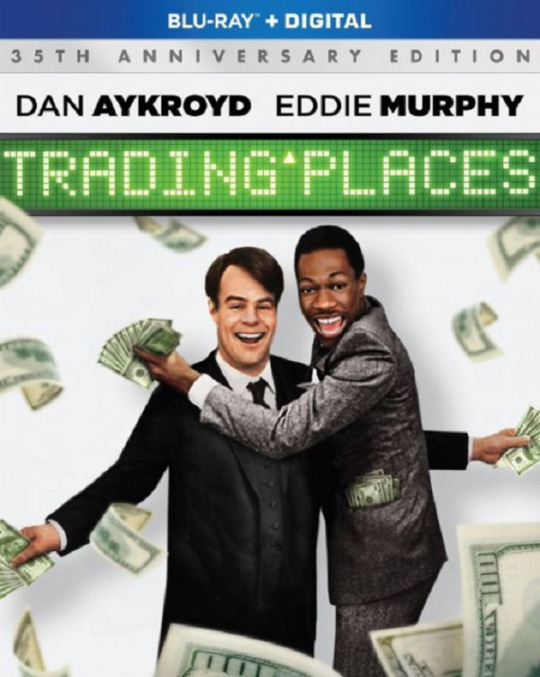
TRADING PLACES – 35th ANNIVERSARY EDITION (1983)
Starring Dan Aykroyd, Eddie Murphy, Jamie Lee Curtis, Ralph Bellamy, Don Ameche, Denholm Elliott, Paul Gleason, Kristin Holby, James Belushi, Al Franken, Bo Diddley, Frank Oz, Tom Davis, Giancarlo Esposito, Nicholas Guest, Charles Brown, Bill Cobbs, Philip Bosco, Alfred Drake, Kelly Curtis, Barry Dennen, Arleen Sorkin and John Landis.
Screenplay by Timothy Harris & Herschel Weingrod.
Directed by John Landis.
Distributed by Paramount Pictures. 116 minutes. Rated R.
COMING TO AMERICA – 30th ANNIVERSARY EDITION (1988)
Starring Eddie Murphy, Arsenio Hall, Shari Headley, James Earl Jones, John Amos, Madge Sinclair, Eriq La Salle, Louie Anderson, Vanessa Bell, Frankie Faison, Jake Steinfeld, Clint Smith, Cuba Gooding Jr., Vondie Curtis-Hall, Samuel L. Jackson, Victoria Dillard, Garcelle Beauvais, Elaine Kagan, Tobe Hooper, Don Ameche and Ralph Bellamy.
Screenplay by David Sheffield and Barry W. Blaustein.
Directed by John Landis.
Distributed by Paramount Pictures. 115 minutes. Rated R.
After decades of crappy comedies along the lines of The Adventures of Pluto Nash, Meet Dave, A Thousand Words and Norbit, it’s pretty easy to forget that when Eddie Murphy first started making movies after becoming a star on Saturday Night Live, he started on a wicked winning streak. His first three films – 48 Hrs., Trading Places and Beverly Hills Cop – were not only damned good, they were all monster hits.
Well, get ready to feel old, because Trading Places is turning 35. In honor of that film’s anniversary, Paramount Home Video is re-releasing it, as well as Coming to America, which is turning 30. By the time that film came out, the bloom was already coming off the Eddie Murphy rose – he had made such stinkers as Best Defense, The Golden Child and Beverly Hills Cop II, foreshadowing a career full of lazy performances in misbegotten projects.
Trading Places is deservedly a classic. While Coming to America was not on the quality level of Murphy’s original trifecta – and it spurred a bit of controversy (humorist Art Buchwald sued the filmmakers for stealing the idea from an unproduced screenplay he had written) – it was all-in-all an imperfect, but pretty good comedy.
In fact, arguably it is the last time Murphy made a satisfying comedy that was not animated. Really, there are only a handful that even come close in the last three decades. I’d personally include Boomerang and Bowfinger as the only two comedies that approach to that level. Other people might include the remake of The Nutty Professor (which I’ve always felt was way overrated) and maybe Tower Heist. (I’m not counting the animated Shrek and Mulan films, nor dramatic performances like in Dreamgirls.)
However, Murphy’s longtime career inertia should not reflect on these two movies, one of which is terrific and the other of which is pretty darned good. Both were directed by legendary filmmaker John Landis at the height of his powers. (He also made Animal House, The Blues Brothers and An American Werewolf in London, though he has only made three totally unseen movies in the last 20 years.)
Actually, for as good as Murphy was in Trading Places, it was probably a bit more Dan Aykroyd’s movie. A look at class structures in the dawn of the greed-is-good Reaganomic ‘80s, it was a wonderful mix of high comedy and low comedy.
The high concept behind the film was rather brilliant. Two self-centered Philadelphia multi-millionaires, The Duke Brothers (Ralph Bellamy and Don Ameche) decide on a whim, for a $1.00 bet, to do a “social experiment” essentially meant to destroy two men’s lives. One is one of their most faithful, best employees, Louis Winthorpe III (Aykroyd), a pampered blue-blood who – in the words of one of the other characters – has never done a hard day’s work in his life. The other is Billy Ray Valentine (Murphy), a street hustler with no education and no job.
The Dukes’ argument is whether a man is a product of his work ethic or his environment, so they decide to see what would happen if they put each man in the other’s shoes. They frame Winthorpe for drug dealing, stripping him of his job, his home, his money, his fiancée and his friends. In fact, the only person in his corner is a good-hearted prostitute (Jamie Lee Curtis). Then the Dukes slip Valentine into his life, temporarily giving him lots of money, a great house, a good job and responsibility.
How will the men change? Will Billy Ray turn into a responsible citizen? Will Winthorpe become a criminal?
This class warfare, with out-of-touch oligarchs becoming puppet masters on common lives, takes on a new power in the Trump years. The Duke Brothers’ casual manipulation of other people’s lives is sadly even more topical today. (They were the Koch Brothers before the Kochs were.) And the audience can’t help but cheer when Winthorpe and Valentine team up to not only become rich, but to try to bankrupt the Dukes.
However, for all the important sociological points the movie is making, Trading Places is a comedy first and foremost. And a damned good one. One of the better ones of the 80s. Some parts haven’t aged well – for example a scene with Aykroyd disguised in blackface as a ganga-smoking African. Some things are also a little melancholy due to history – there is a sequence outside of the World Trade Center in New York which takes on a gravity that was never meant in the original filming.
Still, Trading Places is totally worth its classic status.
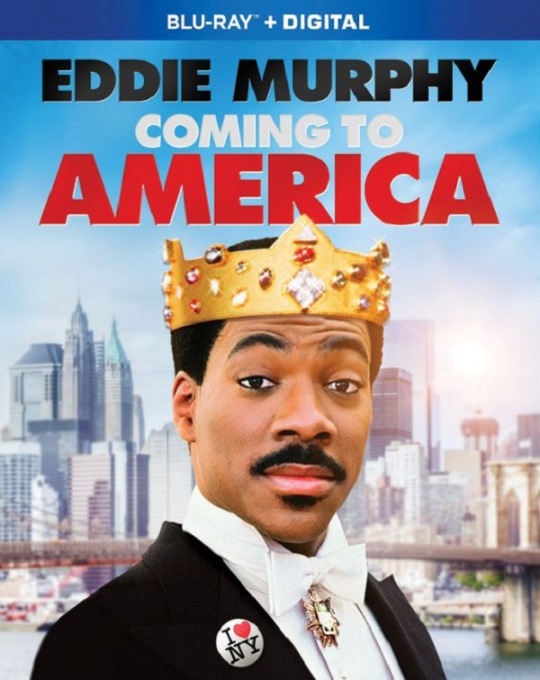
If Trading Places was a collaborative film with Murphy sharing the spotlight with Aykroyd, Coming to America is Murphy’s show. Sure, he has a funny sidekick played by a pre-talk show Arsenio Hall, but Murphy was not about to share the spotlight. (Word is that Murphy’s star-tripping made the film a very, very uncomfortable set to work on, with co-stars and even director Landis complaining about Murphy’s big-timing them. Landis and Murphy even supposedly got into a fistfight on set.)
However, the turmoil behind the scenes don’t show up on the screen yet for Murphy. Even if James Earl Jones referred to him as a chill wind on the set, Murphy still works to connect warmly with his co-stars when the cameras are rolling.
Like Trading Places, Coming to America has a high-concept plot, though honestly a much less imaginative concept. Basically, it is a fish out of water story. Murphy plays Prince Akeem of the fictional African country Zamunda. He is next in line of succession to become King, but he rebels when his parents the King and Queen (Jones and Madge Sinclair) insist he continue in the country’s tradition of arranged political marriages.
Akeem is a romantic and wants to marry out of love, not political convenience. But where does a prince find his future queen? Queens, New York, of course. (Pause for the inevitable groan at that pun, which was stupid even back then.) And this is an old-school, pre-gentrified, rat-infested and crime-ridden Queens.
Akeem wants to fit in with the normal people of Queens, much to the dismay of his best friend and servant Semmi (Hall). Akeem wants to make sure that the woman he chooses will love him for who he is, not for what he has. So, they take a (surprisingly big) room in a run-down boarding house. They get minimum wage jobs at a local fast food joint called McDowell’s, a slightly shady McDonald’s knock off, so that the pampered prince can experience what it is like to be a normal working man.
After a series of unsuccessful meetings with women in bars, Akeem ends up finding the woman of his dreams in McDowell’s, Lisa (Shari Headley), the daughter of the money-obsessed owner of McDowell’s (John Amos). However – irony alert – she is being pressured into marrying the shallow-but-rich pretty-boy heir to a local Jheri-curl fortune (played by a pre-ER Eriq LaSalle).
Can Akeem’s courtly good manners and eternal good humor win her over?
In the meantime, Akeem loves being a normal guy as Semmi chafes against the existence and wishes for a return to luxury. They become well-known in the neighborhood, regulars at the restaurant, the bar, the local black community organization and the barber shop next door. The Dukes from Trading Places even make a cameo appearance.
Still, the early signs of Murphy’s downfall show up here periodically. This is the first movie in which Murphy does his tiresome schtick of playing multiple characters under lots and lots of makeup. (Hall also plays several roles here.) These little vignettes are rarely more than mildly amusing, and they also grind the plot to a halt each time, having nothing really to do with the rest of the story.
Honestly, watching Coming to America again with 30 years of hindsight, it is not quite as funny or as charming as you remember it being. Still, it does hold up fairly well and is worth another look.
If you want to take a trip back down memory lane to a long-ago point in time when Eddie Murphy was actually funny, these two disks are a good place to start.
Jay S. Jacobs
Copyright ©2018 PopEntertainment.com. All rights reserved. Posted: June 12, 2018.
2 notes
·
View notes